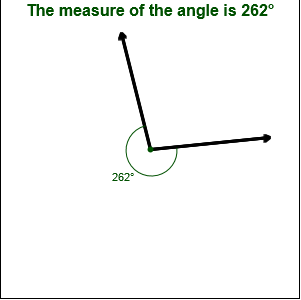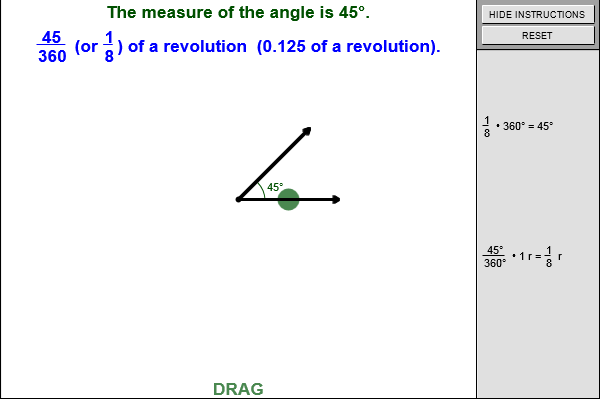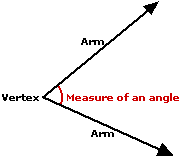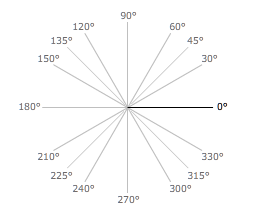Degree (Angle Measure)
Definition
"Degree" is a unit commonly used when measuring an angle. The symbol for degrees is "°".
The measure of an angle is a number representing the spread of the two arms of the angle.
360° is equivalent to one "revolution" (r). Given either a number of degrees or a number of revolutions, the other "unit" can be found by using equivalent ratios.
 Image onlyInstructions text as in global.js
Image onlyInstructions text as in global.js
An angle with a measure of 1° is shown in the the illustration below.
Benchmark Angle Measures
Common benchmark angles in degrees are usually either multiples of 90°, multiples of 45° or multiples of 30°, as shown below.
Video does not play in this browser or device. Please try another device or upgrade your browser.
Putting these together results in the following:
Note that the least common multiple of 30 and 45 is 90.
In the "grouped" diagram above there are "gaps" between 0° and 30°, 60° and 90°, 90° and 120°, etc.
These "gaps" occurs as the greatest common factor of 30 and 45 is 15 and the smallest benchmark angle is 30°.
Demonstration
 Image onlyInstructions text as in global.js
Image onlyInstructions text as in global.js




